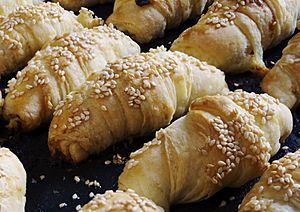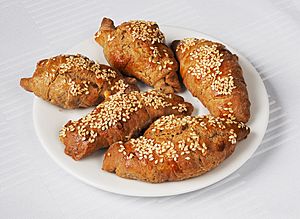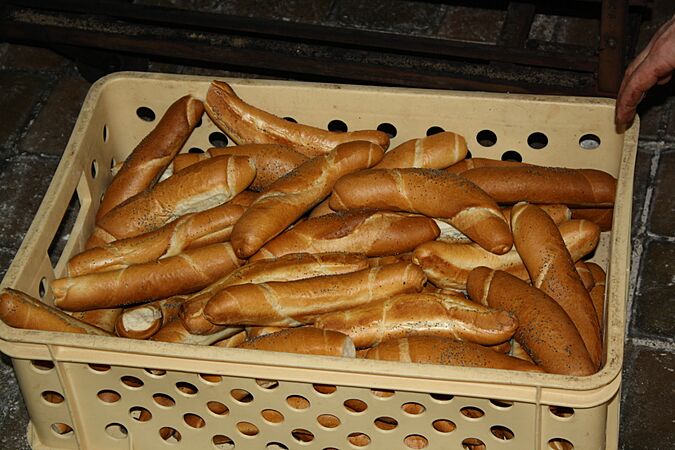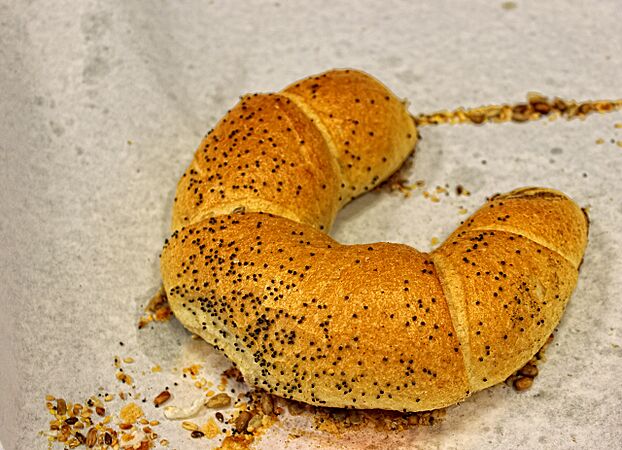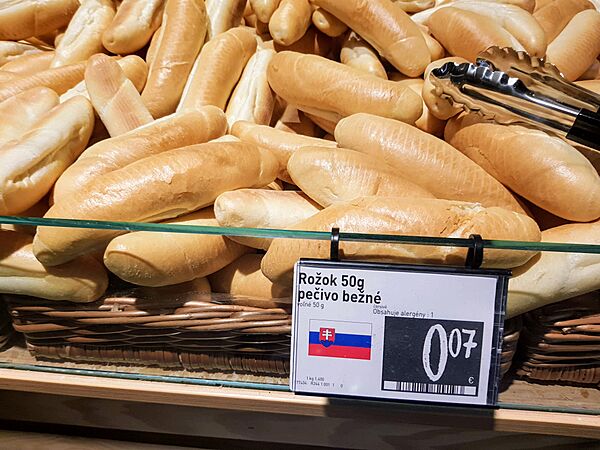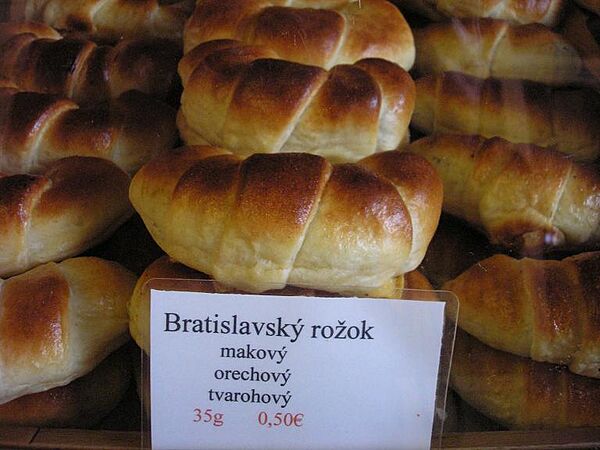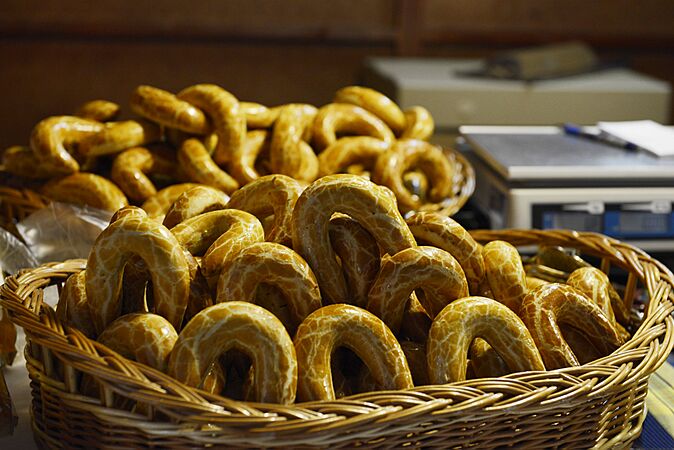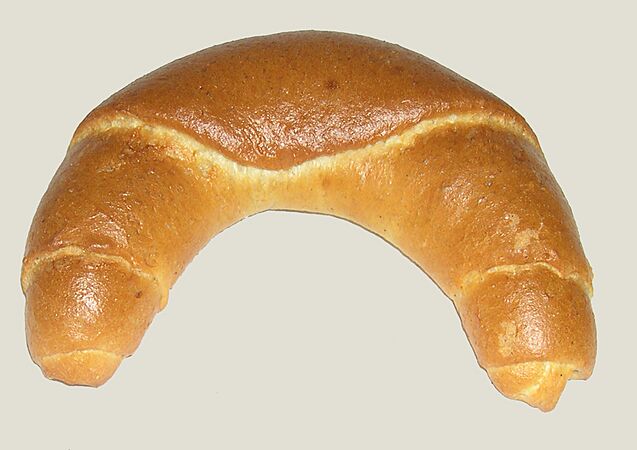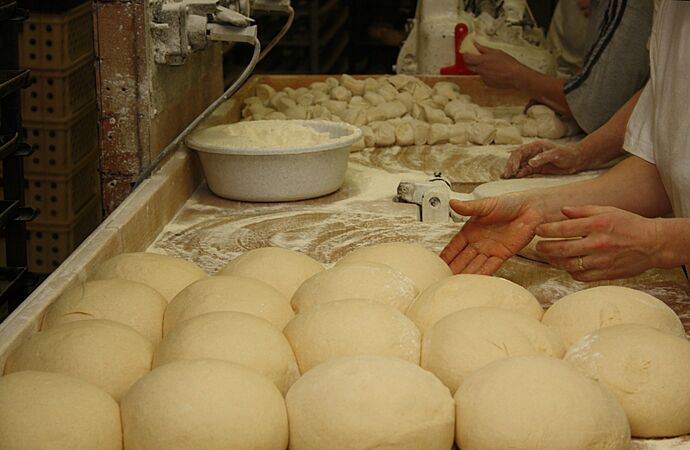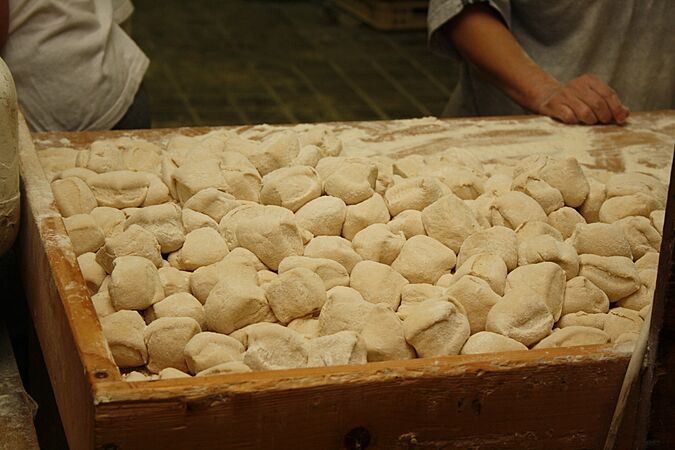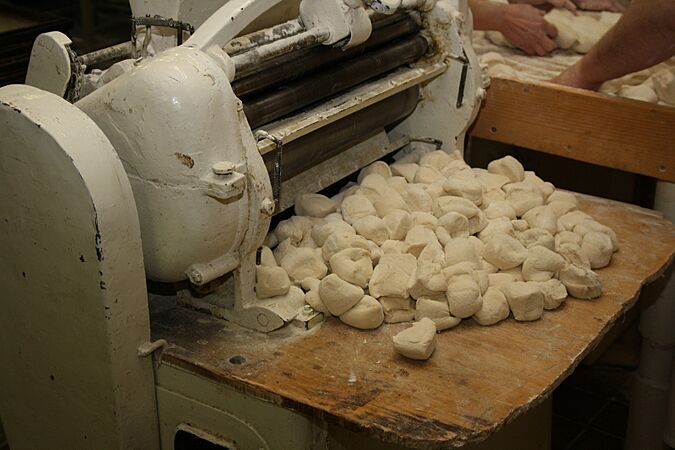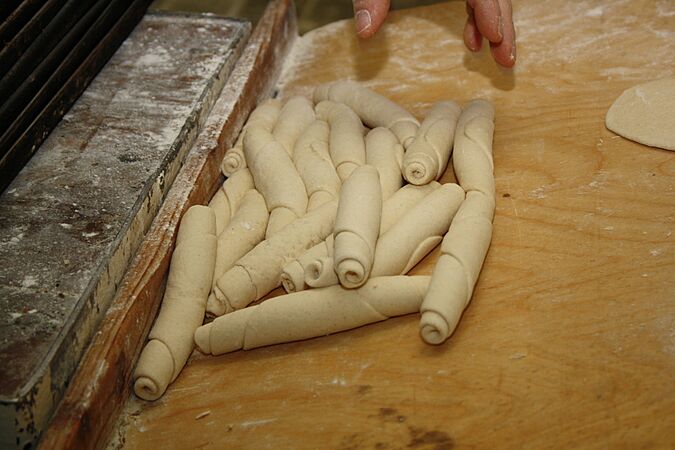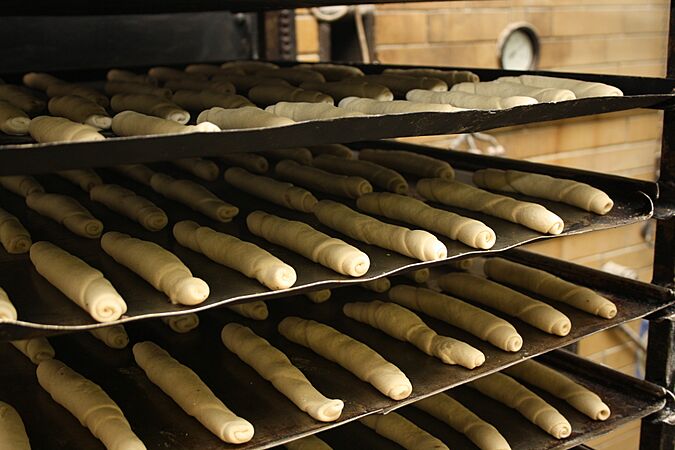Kifli facts for kids
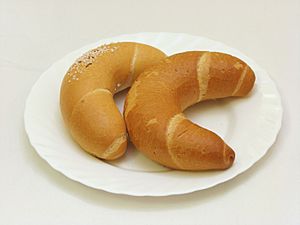
Two kifli, the left one salted
|
|
| Course | Breakfast, Coffee break |
|---|---|
| Region or state | Balkans, Central Europe |
| Serving temperature | Warm or room temperature |
| Main ingredients | Wheat flour |
Kifli (also called kiflice, kifle, or kipferl) is a yummy traditional bread roll. It's made from a special dough with yeast, then rolled into a cool crescent shape before it's baked.
You can find Kifli all over Central Europe and nearby countries. It has different names depending on where you are. Many people think Kifli was the idea behind the French croissant. They look very similar, but croissants are made with a different kind of dough.
Contents
What Kifli is Called Around the World
Kifli has many different names, showing how popular it is! Here are some of them:
- kifli in Hungary
- Kipferl in Austria
- kifla or кифла in Croatia, Bosnia and Herzegovina, and Serbia
- кифла in Bulgaria and North Macedonia
- kifle in Albania
- giffel in Denmark and Sweden
- gipfel in Switzerland
- rogal or rogalik in Poland
- rohlík in the Czech Republic
- rožok in Slovakia
- рогалик (rogalik) in Russia and Ukraine
- rogljiček in Slovenia
- cornuleț in Romania
- horn in Norway
- Hörnchen in Germany
The names rogal, rohlík, and others come from an old Slavic word meaning "horned" or "little horn." This makes sense because of Kifli's shape!
The History of Kifli
Kifli are a very old type of bread. They are made with yeast and shaped like a crescent moon. In Austria, these rolls are called Kipferl. An old monk from the 1600s, Abraham a Sancta Clara, even wrote about them. He said the moon looked like a "kipfl" and that they came in many shapes: long, short, straight, and crooked.
People believe that crescent-shaped pastries were offered to the moon goddess, Selene, a long, long time ago. This shape is also like horns, which have old meanings too. It's thought to be one of the oldest pastry shapes still around!
In the 10th century, a list of foods eaten in a convent included "panis lunatis." These were small, crescent-shaped rolls often eaten during times of fasting.
Kifli has been around in Austria since at least 1227. They were mentioned in Vienna as "chipfen." The Austrian government even officially recognizes Kifli (Kipferl) as a traditional food! They think Kifli might have been a special monastery pastry baked for Easter. Today, they are popular for breakfast or coffee breaks, especially in Vienna.
Many people believe that Kifli inspired the famous French croissant. Even though they look alike, croissants are made with a different, flaky dough.
Fun Stories About Kifli's Origin
There are some fun stories about how Kifli came to be. One popular story says that when Christian armies took back the city of Buda from the Ottoman Empire in 1686, the bakers celebrated. The next day, they baked fresh bread rolls shaped like a crescent moon to remember the victory. Another story says the Kipferl was invented in Vienna during or after a siege by the Ottoman Turks.
How Kifli is Made
Traditionally, Kifli are made by rolling out soft yeast dough into a thin sheet. Then, the dough is cut into triangle shapes. Each triangle is rolled up, starting from the wide end, to form the crescent shape. Finally, they are baked until golden.
Unlike the French croissant, Kifli is made from a simple, bread-like dough. It's more like a roll than a fancy pastry. Kifli are usually thinner and longer than croissants. They can be made in different sizes, with some being as big as a small loaf of bread!
When Kifli are made in large bakeries, machines help with the process. The dough is mixed and cut into small pieces. Then, a machine flattens and rolls the dough. After that, people still shape them by hand, just like the traditional way.
Different Kinds of Kifli
Kifli comes in a few tasty varieties!
Regular Kifli
After baking, Kifli can be left plain or brushed with water to make them shiny. Sometimes, they are brushed with egg wash and sprinkled with poppy seeds or caraway seeds mixed with coarse salt. The ones with salt and caraway are often made straight instead of curved.
You can eat Kifli just like any bread or roll. They are great for making sandwiches, or you can eat them plain with butter, like a fresh baguette. For breakfast, people often enjoy them with jam or honey. They are also good for dipping into drinks!
Fine Kifli
This type of Kifli is similar to the regular kind, but the dough might have butter or other fats and milk in it. It's usually sweeter than regular Kifli. This makes it perfect to eat with jam or honey. People often have fine Kifli for breakfast with coffee, hot chocolate, or milk.
Sweet Kifli Pastries
There are also some sweet pastries that are called "kifli" because of their crescent shape. But when someone just says "kifli," they usually mean the regular or fine bread rolls. These sweet versions are eaten as a dessert or with an afternoon drink. In German, they even have a slightly different spelling to show they are different.
- Vanillekipferl are small, soft cookies. They are made from ground nuts (like walnuts or almonds) instead of flour. After they are baked, they are rolled in vanilla-flavored powdered sugar.
- Bratislavský rožok (also known as diós kifli or mákos kifli) are sweet, crescent-shaped pastries. They are filled with a sweet walnut or poppy seed paste. These are special traditional foods in the EU and the UK. They are similar to another pastry called beigli, but they have a different shape and size.
Other Ways Kifli is Used
Sometimes, if Kifli gets a little old, it can be used to make a sweet bread pudding called Kipfelkoch.
Images for kids
- Kifli of various cuisines
- Commercial rohlik production in Czechia
See also
 In Spanish: Kifli para niños
In Spanish: Kifli para niños


